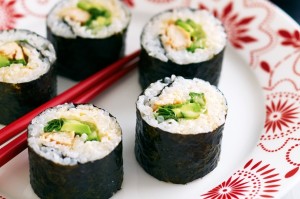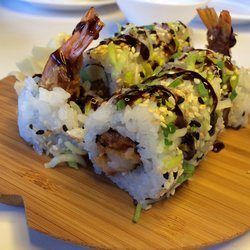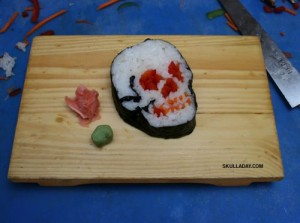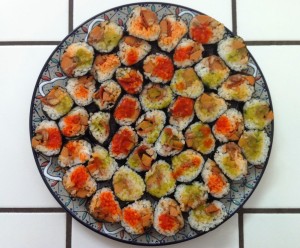Food safety isn’t linked to how much or little a restaurant charges for a meal or whether it’s on Rodeo Drive or a rural gravel road – what matters is whether the operator and staff reduce risks. And not increase them.
An operator forcing staff to handle food while sick or piss in a kitchen sink, Bieber-style, increases the likelihood of patron illnesses – and it’s dumb. I don’t want to eat in a place like that for food safety and labor reasons. According to a New York Times piece, a hot Los Angeles sushi place sounds like it belongs in an SNL Weekend Update Stefon bit.
 One of the country’s most renowned sushi restaurants, Urasawa, sits in a small alcove above Rodeo Drive here. A typical bill for two people easily tops $1,000. Over an evening that can stretch to three hours, diners are served dishes dotted with caviar and 24-karat gold flakes (for the iron, the chef notes).
One of the country’s most renowned sushi restaurants, Urasawa, sits in a small alcove above Rodeo Drive here. A typical bill for two people easily tops $1,000. Over an evening that can stretch to three hours, diners are served dishes dotted with caviar and 24-karat gold flakes (for the iron, the chef notes).
But workers in the back kitchen are routinely denied overtime pay and forbidden from taking breaks, according to former employees and a California Labor Department investigation. Now, the chef and owner, Hiroyuki Urasawa, is battling state and civil claims that he withheld tens of thousands of dollars in wages and overtime from workers. One former employee who left the restaurant last year said he resorted to urinating in the sink meant for cleaning mops after being told the men’s restroom was for customers only during business hours.
Each night, Mr. Urasawa stands behind a pristine sushi bar serving more than a dozen dishes, each with an elaborate description of the provenance of the ingredients, mostly imported from Japan. With an affable smile, he happily accepts sake from diners, who can spend hundreds of dollars on a bottle.
“It was always about the customers, making sure that they were happy,” said Heriberto Zamora, 26, who worked at the restaurant for more than five years and has filed a civil suit for back pay. “None of the employees were treated very well. We knew people were paying a lot to eat there, but for us it was no different.”
One day last June, nine hours into his shift, Mr. Zamora was coughing and asked to go home, complaining of a fever, he said. Mr. Urasawa fired him on the spot, he said.
Making staff work while ill and use a kitchen sink as a urinal is no way to go through life, son.
 New Mexico health authorities are investigating a cluster of salmonella cases in the Albuquerque area, including possible exposures linked to sushi.
New Mexico health authorities are investigating a cluster of salmonella cases in the Albuquerque area, including possible exposures linked to sushi.








